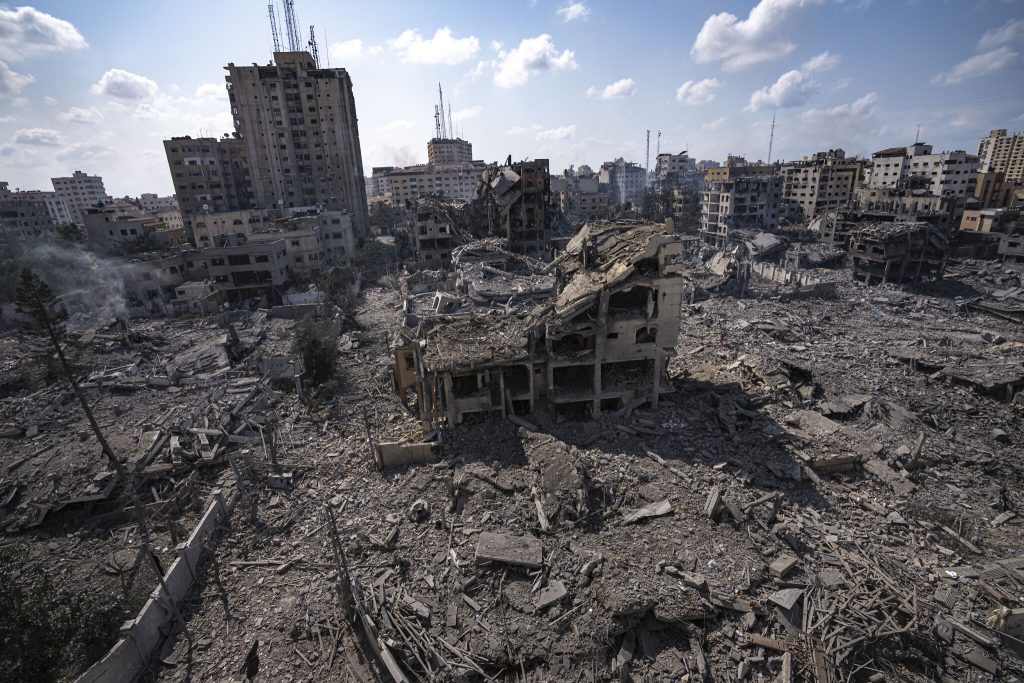
by Lev Tsitrin
Politicians talk of Gaza’s “day after” in the terms of who will rule it after Hamas is destroyed. The Biden administration’s vision is that Gaza will be ruled by a “reformed” PA — i.e. the PA that finally abandons its dream of destroying Israel — while Israelis (politely) laugh it off as a pipe dream. They think of approaching traditional tribal leaders to maintain law and order, and keep control in the strip.
But politics of governance is only one — and not the most important — aspect of Gaza’s future that needs to be worked out. Of key importance is the architectural lay of the land that will make governing Gaza possible.
Since much of Gaza lies in ruins (and as Hamas tunnels are blown up, more structures atop them will crater in), the occasion just begs, like other instances of devastation — the Great Fire of London of 1666, or of Rome at the time of Nero, for complete architectural redesign of the territory — the redesign that fixes its current flaws.
What are those flaws? They are easy to see — while haters of Israel claim that as of October 6, Gaza was an “open-air prison,” this “prison” had a peculiarity that no other prison in the world has — it gave Gazans complete freedom of action. Had Gazans wanted to build up their economy — developing industry, construction, agriculture, tourism — they were free to do so. And — they were equally free to build a terror fortress, and dedicate all their effort on trying to attack and destroy Israel. An odd kind of prison indeed!
It is this feature of absolute freedom of action allowed to inhabitants that the architecturally redesigned Gaza should fix. And clearly, the Israelis are working on it, to judge by the reports of a clearing of a kilometer-wide (which amounts to about .6 of a mile) buffer zone along the border. Hopefully, once Gaza’s southern border with Egypt comes under Israeli control after Rafah is taken, a similar buffer zone will be created there too — and the tunnels from Sinai that serve as the pipeline for the flow of arms into Gaza will be destroyed. The Biden administration does not like this, demanding that the territory that was controlled by the Palestinians on October 6 not be diminished — but this demand has no legal basis since the borders between Israel and Palestinian territories have never been demarcated due to Palestinian intransigence (the failure to demarcate borders being, in fact, the epitome of Oslo’s failure), and the 1948 armistice line now in place is merely that — an armistice line. Once Palestinians crossed it in an act of belligerency, they made it completely legal for this line to be shifted: new military action creates a new armistice line. It is rather basic.
So, this works for the land border — but Gaza has a long coastal line too, that is dotted with the luxury villas of the Hamas bigwigs, civilian and military. What to do there? Just hand them back?
I would advise against this. How about doing some justice for the families of the Israelis who were murdered and maimed on October 7? And for the families of Israel’s fallen soldiers? Nothing can compensate them for what their loss, but taking over the entire cost line, and handing those mansions to them is at the very least fair. Needless to say, for their protection another buffer zone should run to coast’s east.
In this manner, not only some measure of justice will be done — but no contraband will be coming to Gaza via the sea, either. If Gaza is to be an “open-air prison,” the activities of the inhabitants should be controlled — they should only be allowed peaceful pursuits, not military ones. They should be able to prosper — but not to threaten their Israeli neighbors.
To those who would (and in fact do) call a buffer zone around Gaza a “land grab”, I say “no.” It is but an implementation of a well-known, and well-worn Oslo formula of “land for peace.” At the cost of some land, Israelis will get peace on their southern border.
Cities are being built on pre-designed plans all the time — Wikipedia dedicates an article to the subject of “planned community” — and lists a bunch of places that developed not chaotically, but with architectural forethought that was fitted to fulfilling their function. Canberra, Brasília, New Delhi, Islamabad, Washington, D.C were built on an overarching, thought-out plan as capitals of the countries.
The same goes for Gaza. Its future function is to not threaten Israel, and its future architecture should be designed accordingly. While I fully agree with the Biden administration that planning for the “day after Hamas” should start now, the planning in question should be not so much about Gaza’s politics, but about Gaza’s architecture. With the right architecture of the strip, the proper — peaceful — politics will just fall into place.








One Response
Sensible ideas, plans. A next step might be an arable land mass for all Gazans to be moved to, the territory to be noncontiguous with Israel.
Funding for the relocation by current funders: UN, EU, Indonesia, Ummah others.
Israel to annex all Gaza properties/assets in partial compensation for all wartime injuries incurred by Israel and its guest workers and tourists killed and alive.